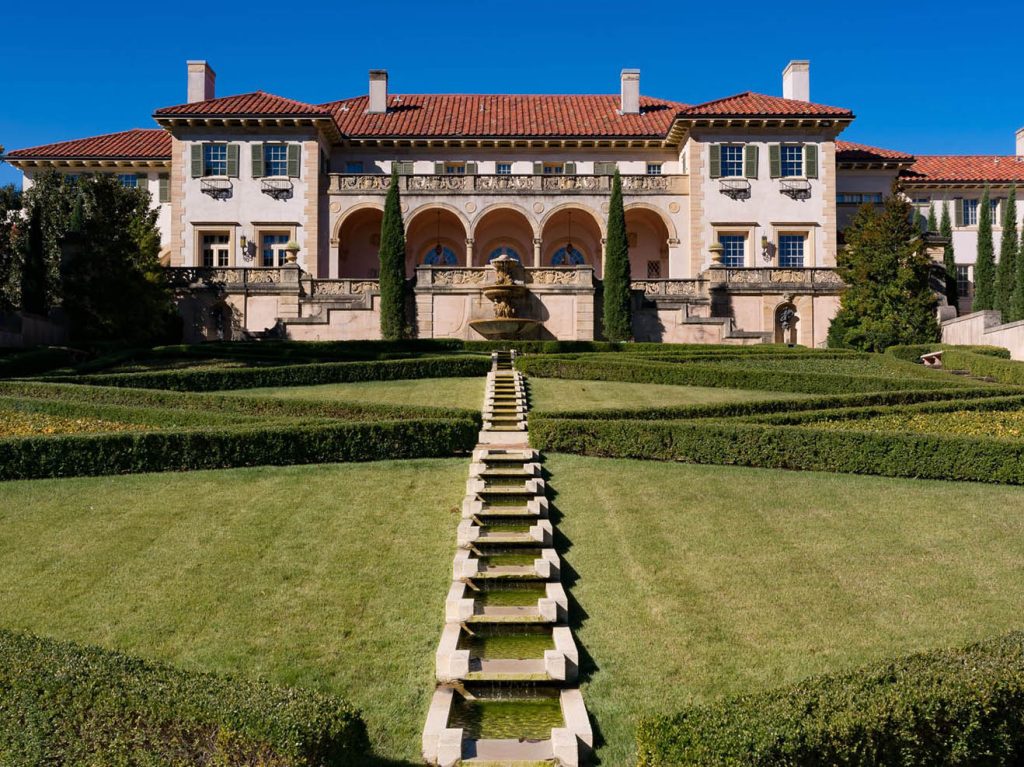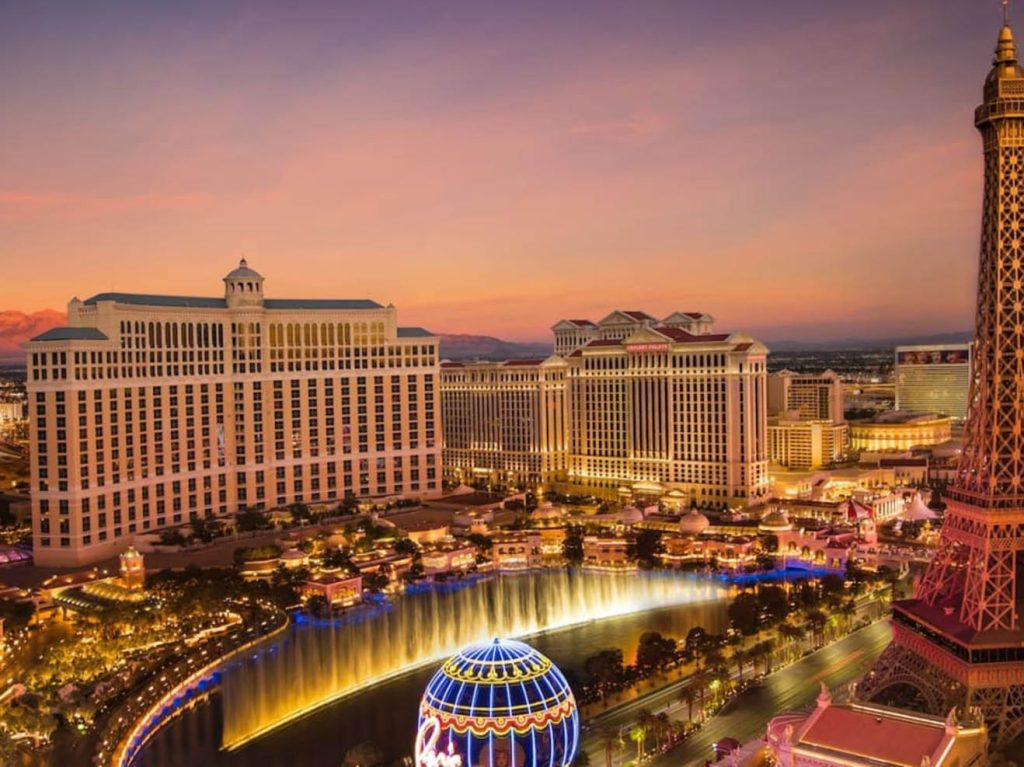Unveiling Tulsa’s Cultural Heritage: A Journey Through History
Embarking on my exploration of Tulsa, Oklahoma, I was drawn to unraveling its historical tapestry, keen to immerse myself in the cultural gems hidden within this Midwestern city.
Gilcrease Museum:
As I stepped through the grand entrance of the Gilcrease Museum, I felt a sense of anticipation building within me. The imposing facade of the building hinted at the treasures that lay within, and I was eager to immerse myself in the cultural riches it promised to unveil. Founded by the visionary oil magnate Thomas Gilcrease in 1949, this institution stood as a beacon of Tulsa’s dedication to preserving the heritage of Native American peoples.
Entering the museum’s hallowed halls, I was immediately struck by the sheer scale and diversity of its collection. Spanning over 10,000 works of art, artifacts, and historical documents, the Gilcrease Museum offered a comprehensive journey through the annals of Native American history and culture. As I strolled through its galleries, I found myself traversing through time, surrounded by a breathtaking array of Native American artwork and craftsmanship. Each piece, from intricately beaded garments to intricately painted pottery, served as a testament to the ingenuity and creativity of Indigenous peoples.
One exhibit, in particular, left an indelible mark on my soul: the “Trail of Tears” display. As I gazed upon the poignant artifacts and read the harrowing accounts of forced relocation, I was overcome with a profound sense of sorrow and empathy. The exhibit vividly captured the anguish and resilience of the Cherokee Nation members who endured unimaginable hardships during their forced march in the 1830s. It was a sobering reminder of the dark chapters in American history, yet it also highlighted the strength and perseverance of those who survived.
The Gilcrease Museum spared no effort in ensuring a seamless and enriching experience for its visitors. Guided tours provided invaluable insights into the significance of each exhibit, while educational programs offered opportunities for deeper exploration and engagement. The museum’s well-stocked gift shop allowed me to bring a piece of Tulsa’s cultural heritage home with me, with a curated selection of books, crafts, and souvenirs available for purchase. Additionally, the museum’s ample parking facilities and wheelchair accessibility ensured that guests of all abilities could enjoy its offerings without hindrance.
Location: 1400 Gilcrease Museum Rd, Tulsa, OK 74127
Situated northwest of downtown Tulsa, the museum’s convenient location made it easily accessible by both car and public transportation. Whether arriving by car or bus, the journey to the Gilcrease Museum was straightforward and hassle-free, allowing me to focus my energy on the enriching experience that awaited me within its walls.
Prior to my visit, I had the option to purchase tickets online via the museum’s official website or simply obtain them at the entrance upon arrival. The flexibility offered by the Gilcrease Museum in ticketing options ensured that planning my visit was convenient and stress-free, allowing me to focus on savoring every moment of my exploration.
Philbrook Museum of Art:
As I approached the majestic gates of the Philbrook Museum of Art, I was immediately struck by its picturesque setting amidst sprawling botanical gardens and historic architecture. Nestled amidst verdant greenery, this cultural gem stood as a beacon of artistic excellence in the heart of Tulsa, promising a journey through the ages of human creativity and expression. Housed within a stately villa dating back to the 1920s, the Philbrook Museum exuded an air of elegance and sophistication, inviting visitors to embark on a voyage of discovery through its hallowed halls.
Stepping into the Philbrook’s opulent halls, I was transported to a world where art and beauty intersected seamlessly. The museum’s impressive collection spanned centuries and continents, featuring a diverse array of European, American, and Native American artworks. As I wandered through its galleries, I found myself captivated by the sheer diversity of artistic styles and mediums on display. From Renaissance masterpieces adorned with intricate brushwork to contemporary installations that pushed the boundaries of traditional art forms, each piece served as a testament to the boundless creativity of the human spirit.

Outside, the Philbrook’s meticulously landscaped gardens provided a welcome respite from the hustle and bustle of city life. Strolling along its winding pathways, I was enveloped by the sights and scents of nature, as vibrant blooms and verdant foliage danced in the gentle breeze. Amidst the tranquil beauty of the gardens, I found moments of serenity and introspection, allowing me to reflect on the profound impact of art and nature on the human experience.
The Philbrook Museum spared no effort in ensuring a memorable and enriching experience for its visitors. Guided tours offered invaluable insights into the museum’s collection, providing context and perspective on the works of art on display. Art workshops provided opportunities for hands-on exploration and creative expression, allowing visitors of all ages to unleash their inner artist. Additionally, the museum’s on-site café offered a delightful array of refreshments, from artisanal coffees to delectable pastries, providing the perfect fuel for a day of cultural exploration. Before departing, I made sure to stop by the museum’s gift shop, where a curated selection of souvenirs and mementos awaited, allowing me to bring a piece of the Philbrook’s magic home with me.
Location: 2727 S Rockford Rd, Tulsa, OK 74114
Situated south of downtown Tulsa, the Philbrook Museum was easily accessible by both car and public transportation. Whether traveling by car or bus, the journey to the museum was a straightforward one, with ample parking available for those arriving by car and convenient public transit options for those opting to use alternative transportation methods.
Prior to my visit, I had the option to purchase tickets online via the museum’s official website or simply obtain them at the admissions desk upon arrival. The flexibility offered by the Philbrook Museum in ticketing options made planning my visit a breeze, ensuring that I could focus on savoring every moment of my exploration without worrying about logistical details.
Greenwood Cultural Center:
As I crossed the threshold of the Greenwood Cultural Center, I felt a profound sense of reverence wash over me, as if stepping into a sacred space where the echoes of history reverberated with every footfall. Nestled within the storied confines of the historic Greenwood District, this cultural center stood as a beacon of remembrance, honoring the resilience and spirit of Tulsa’s African American community in the face of unimaginable adversity.
Inside, the Greenwood Cultural Center unfolded like a tapestry of resilience and triumph, woven from the threads of personal stories and collective memory. As I explored its exhibits, I was enveloped by the powerful narratives of courage and perseverance shared by the descendants of those who had weathered the storm of the 1921 Tulsa Race Massacre. Each artifact, from the sepia-toned photographs capturing moments of joy and sorrow to the oral histories echoing with voices of resilience, served as a poignant reminder of the indomitable spirit that had sustained Tulsa’s African American residents through the darkest of times.
The Greenwood Cultural Center offered a wealth of services and amenities designed to engage and enlighten visitors of all ages. Educational programs provided opportunities for deeper exploration and understanding of African American heritage, while guided tours offered insights into the historical significance of each exhibit. Community events fostered a sense of belonging and connection, inviting visitors to participate in the ongoing dialogue about the center’s mission and purpose. Before departing, I made sure to browse the center’s gift shop, where a curated selection of locally made crafts and artwork awaited, offering a tangible connection to the vibrant culture and heritage of Tulsa’s African American community.
Location: 322 N Greenwood Ave, Tulsa, OK 74120
Situated within the historic Greenwood District, the Greenwood Cultural Center was easily accessible by both car and public transportation. Whether navigating the city streets or following the well-marked pathways of the district, reaching the center was a straightforward journey, with ample parking available for those arriving by car and convenient public transit options for those opting to use alternative transportation methods.
Admission to the Greenwood Cultural Center was free of charge, with donations warmly welcomed to support the center’s ongoing initiatives and programming. This inclusive approach ensured that visitors from all walks of life could access the center’s resources and engage with its mission, fostering a sense of community and unity among those who sought to honor and preserve Tulsa’s African American heritage.
Recommended Historical Sites:
The Cave House:
Located along the picturesque banks of the Arkansas River, the Cave House stands as a testament to Tulsa’s rich and diverse architectural heritage. Constructed in the 1920s, this extraordinary dwelling is a true marvel of engineering and ingenuity, offering a captivating glimpse into the city’s eclectic past. Carved into the natural limestone bluff, the Cave House is a subterranean sanctuary that beckons visitors to explore its labyrinthine chambers and hidden passageways.
While the Cave House itself remains closed to the general public, guided tours and special events occasionally provide fortunate participants with the opportunity to venture inside and uncover its enigmatic secrets. These rare glimpses into the Cave House’s interior offer a tantalizing taste of its mysterious allure, leaving visitors with a sense of wonder and curiosity. For those unable to secure a spot on one of these exclusive tours, the surrounding area offers plenty of opportunities for exploration and discovery. Scenic walks along the riverfront trails provide breathtaking views of the Arkansas River, allowing visitors to immerse themselves in the natural beauty of this hidden gem.
Situated along the banks of the Arkansas River, the exact location of the Cave House remains undisclosed to the public, adding to its air of mystery and intrigue. However, designated viewpoints along the River Parks trail system offer glimpses of this architectural marvel from afar, allowing visitors to admire its unique beauty from a distance.

Accessing the Cave House is an adventure in itself, with designated viewpoints along the River Parks trail system providing the best vantage points for observing this hidden gem. Whether hiking, biking, or simply enjoying a leisurely stroll along the riverfront, visitors can experience the natural splendor of the Arkansas River while catching a glimpse of the Cave House’s enigmatic exterior.
Tulsa Historical Society & Museum:
The Tulsa Historical Society & Museum stands as a bastion of knowledge and a custodian of the city’s rich and storied past. Housed within an imposing neoclassical building, this venerable institution exudes an air of grandeur and importance, beckoning visitors to embark on a journey through time and uncover the secrets of Tulsa’s evolution from a humble frontier outpost to a thriving urban center.
Delving into its vast archives, visitors are transported back in time to witness firsthand the pivotal moments and influential figures that have shaped the city’s trajectory over the centuries. From the early days of Native American settlement to the oil boom of the 20th century, the museum’s exhibits offer a comprehensive and immersive exploration of Tulsa’s past.
The museum’s educational programs and guided tours provide invaluable insights and context, allowing visitors to deepen their understanding of the events and themes that have defined Tulsa’s history. Whether exploring the museum’s galleries independently or joining a guided tour led by knowledgeable docents, every visitor is guaranteed a rich and rewarding experience that sheds light on the city’s complex and multifaceted history.
Nestled amidst the bustling streets of Tulsa, the Tulsa Historical Society & Museum is conveniently located at 2445 S Peoria Ave, providing easy access to visitors from near and far. Situated just south of downtown Tulsa, the museum is easily accessible by both car and public transportation, making it a convenient destination for history enthusiasts and curious travelers alike.
Reaching the Tulsa Historical Society & Museum is a straightforward endeavor, with ample parking available for those arriving by car and convenient public transportation options for those opting to use alternative modes of transportation. Whether navigating the city streets or following the well-marked routes of the public transit system, visitors will find that reaching the museum is a breeze, allowing them to focus their energy on immersing themselves in the captivating history that awaits within its walls.
Woody Guthrie Center:
Dedicated to the life and legacy of folk music icon Woody Guthrie, the Woody Guthrie Center celebrates his contributions to music, activism, and social justice. Through its exhibits and programs, this center offers a poignant reminder of Guthrie’s enduring impact on American culture.
Exploring the Woody Guthrie Center provides a deeper understanding of Guthrie’s timeless songs and their relevance to contemporary issues. Visitors can also enjoy live music performances and browse the center’s gift shop for memorabilia and recordings.
Location: 102 E Mathew B. Brady St, Tulsa, OK 74103
Situated in the Brady Arts District, the center is easily accessible by car or public transportation.
My journey through Tulsa’s cultural heritage was a profound and enlightening experience, filled with moments of discovery and reflection. From the sacred halls of the Gilcrease Museum to the vibrant streets of the Greenwood District, each destination offered a unique perspective on Tulsa’s past and its enduring legacy. As I bid farewell to this remarkable city, I carry with me the memories of its storied landmarks and the lessons they impart about the resilience of the human spirit. Tulsa may be a city rich in history, but its greatest treasure lies in the stories of its people, whose indomitable courage and spirit continue to inspire future generations.





